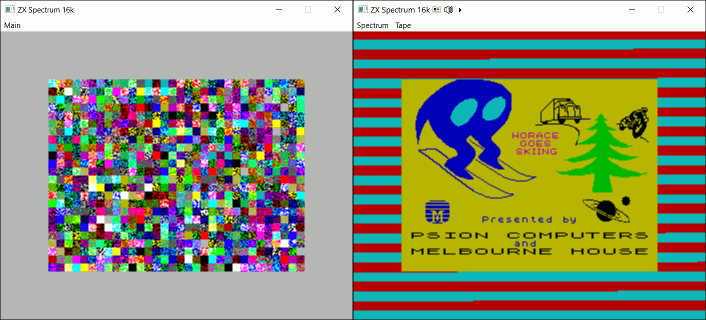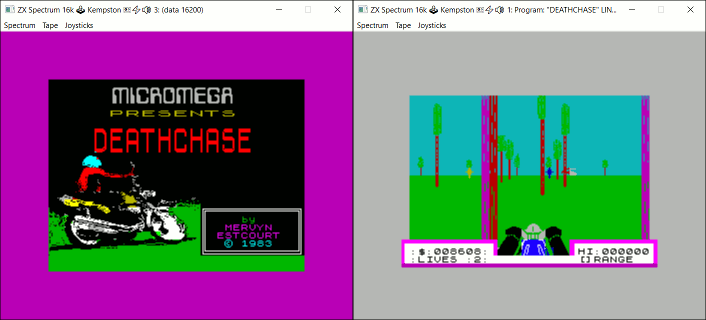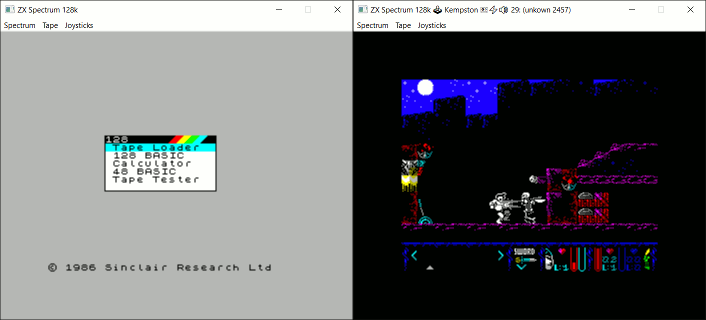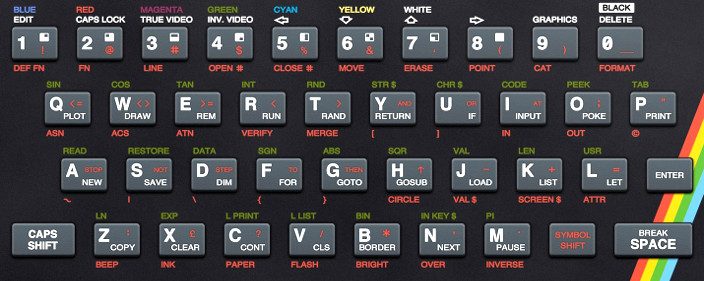Tutorial
How to build your own emulator with the SPECTRUSTY library.
This project is maintained by royaltm
SPECTRUSTY Tutorial
Sinclair ZX Spectrum is an 8-bit computer that consists of a Central Processing Unit, a clock, some memory, and a custom Sinclair Uncommitted Logic Array (ULA) chip. The chip is responsible for I/O with peripherals such as the keyboard and for generating audio and video output. ULA also generates interrupts. When it needs to read pixel data from video memory, it can pause the clock when the CPU is accessing the same part of RAM (memory contention). Moreover, the raw address, data, and control lines of Z80 CPU (in SPECTRUSTY called “the BUS”) are being exposed to allow external devices to be attached.



SPECTRUSTY is a set of components designed in a way that mimics Spectrum’s hardware parts and peripherals. The components are structs and enums that are often having generic types in their definitions. Every such a generic stand-in needs to be substituted by the concrete sub-component. Functions of components are realized via Rust’s trait system.
In SPECTRUSTY, the base part of the emulated computer is its control chip (e.g. Ula or Ula128). Here is the list of the most important traits:
- ControlUnit to execute Z80 code via Cpu and access peripheral devices;
- FrameState to access the clock counters;
- MemoryAccess and ZxMemory to modify or read the content of the emulator’s memory;
- KeyboardInterface to change the state of the Spectrum’s keyboard;
- MicOut to read signal from MIC OUT lines;
- EarIn to feed the EAR IN lines with external input;
- EarMicOutAudioFrame and EarInAudioFrame to help generating sound from EAR IN/OUT and MIC OUT lines;
- Video and VideoFrame for rendering video output;
Other notable traits for peripherals, such as printers, joysticks, serial ports, sound chipsets, microdrives e.t.c. are:
- BusDevice implemented by devices attached to the I/O BUS;
- MemoryExtension implemented by devices that page in external ROM memory;
Prerequisites
You’ll need the Rust language compiler with the Cargo package manager.
Both are best served with a RUSTUP utility. If you don’t like the language scoped version managers, some Linux distributions and 3rd party packaging systems also provide appropriate Rust and Cargo packages.
To check if you can continue, you should be able to run the cargo utility by creating a new repository for your emulator program:
cargo new my-spectrum-emu
If you see a message:
Created binary (application) `my-spectrum-emu` package
then you are good to go.
Tutorial steps
- Step 1 - Baby steps, you can learn how to build a minimal working emulator.
- Step 2 - Buzz on, you can learn how to make your emulator emit sound.
- Step 3 - R Tape loading error, you can learn how to load and save data using files.
- Step 4 - Plug that stick, you can learn how add peripherals to your emulator.
- Step 5 - 128, you can learn how to add different models with more peripherals.
- Step 6 - …
Licensing
This tutorial and example sources in this repository are free to use under the terms of the Blue Oak Model License 1.0.0. See: https://blueoakcouncil.org/license/1.0.0.

